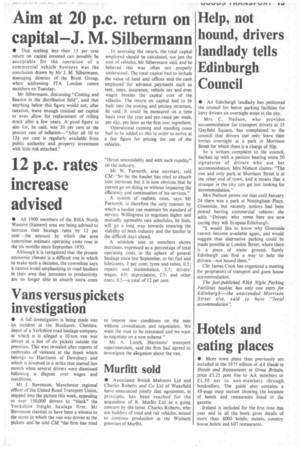Aim at 20 p.c. return on capital J. M. Silbermann
Page 17

If you've noticed an error in this article please click here to report it so we can fix it.
• That nothing less than 15 per cent return on capital invested can possibly be acceptable for the operation of a commercial vehicle business was the conclusion drawn by Mr J. M. Silbermann, managing director of the Brent Group, when addressing ITA London centre members on Tuesday.
Mr Silbermann, discussing "Costing and finance in the distribution field", said that anything below this figure would not, after taxation, leave enough residual net capital to even allow for replacement of rolling stock after a few years. A good figure to aim for, he said, was 20 per cent at the present rate of inflation—"After all 10 to 124 per cent is regularly available from public authority and property investment with little risk attached." In assessing the return, the total capital employed should be calculated, not just the cost of vehicles, Mr Silbermann said, and he believed this was often not properly understood. The total capital had to include the value of land and offices and the cash employed for advance payments such as rent, rates, insurance, vehicle tax and even wages besides the capital cost of the vehicles. The return on capital had to be built into the costing and pricing structure, he said. It could be measured on a time basis over the year and pro-rated per week, per day, per hour as the first cost ingredient.
Operational running and standing costs had to be added to this in order to arrive at a, fair figure for pricing the use of the vehicles.




























































































